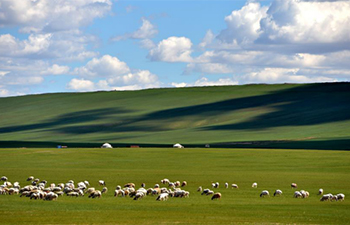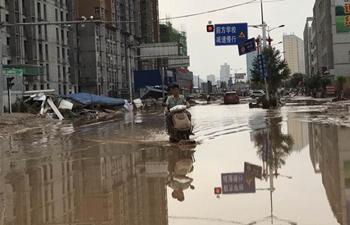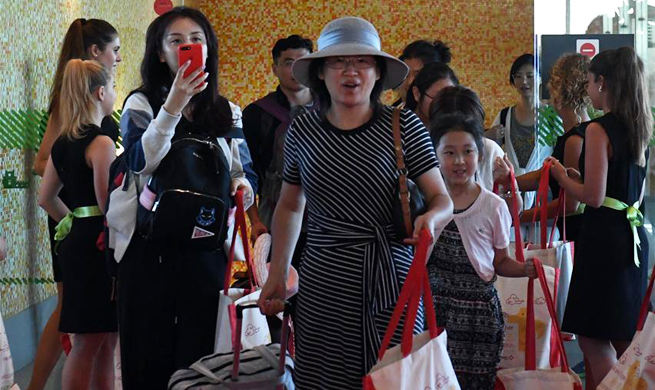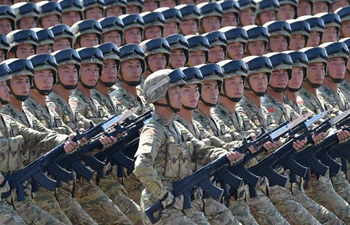by Levi J Parsons
SYDNEY, July 27 (Xinhua) -- One in 20 adolescents in Australia aged 10 to 14 have a food allergy, a new study has found.
The SchoolNuts Study is one of the only population-based studies which has examined the frequency of food allergies in early adolescents.
In total 10,000 kids took part in the clinic evaluation which was conducted by the Australian Center of Food and Allergy Research at the Murdoch Children's Research Institute.
Consisting of skin prick tests, questionnaires and oral food challenges, the findings suggest the commonality of food allergies is increasing, not just the level of reported diagnosis of the condition.
"There has been an increase in prevalence of allergies in Australia, one in 10 babies aged 12 months now have a food allergy," food allergy expert and chief executive officer of Anaphylaxis Australia, Maria Said explained to Xinhua on Wednesday.
"About 6 percent of older children and 2 percent adults also have food allergies."
"There is more awareness, but there is certainly more people with food allergies in 2017."
Among the most common foods people with allergies suffer from include milk, eggs, peanuts, tree nuts, fish, shellfish, sesame, soy, wheat and lupin.
But Said warns that some people can even be allergic to more unusual things like "garlic, banana or chicken."
"There is not a lot understood at this point about the cause of this increase in prevalence, there are lots of theories but we have no one answer," the expert said.
The common consensus around the issue is that a combination of factors are likely to be the reason for the alarming spike.
Those factors are thought to include the introduction of solid food to babies, the amount of exposure to vitamin D, whether a child was breastfed and if a child was born naturally or via cesarean section.
Said also points to a theory known as the hygiene hypothesis, as a possible contributor to modern food allergies.
"Have we created environments that are too clean so our immune system comes unstuck with something as natural as a food protein?" the expert wondered.
When in contact with high-risk foods, sufferers of the condition experience an immune system response, which is often clearly visible.
You will see the person might get hives or skin redness, they might get swelling of the face, the lips, the eyes, but when it crosses over into a severe allergic reaction or anaphylaxis, it involves the breathing and respiratory system and or your cardiovascular heart and blood pressure system," the expert said.
"If either of those two systems are affected, you are having a potentially life threatening reaction."
"Having food allergies really does affect your quality of life, you need to check the food content of everything you eat, every time."
Although there is currently no clear data, Said explained that in Australia, Asian-born parents, particularly from east Asia, are much more likely of having a child with a food allergy.
"Having been involved with several families that have lost children to a food allergy, sadly more than 50 percent of them have had Asian-born parents," the expert said.
"That is really alarming because there doesn't appear to be the increase in prevalence of food allergies in China as there is in Australia."
"But if you have Chinese born parents, your likelihood of having allergy in Australia is increased."
One of the problems for those who experience food allergies according to Said, is that the term "allergy" is used very loosely in Australia.
"That is a real problem because those of us that do have a potentially life threatening allergy are sometimes not taken seriously," the expert said.
"It's really important that people who have a food intolerance or simply don't like a food, say that, rather than claim they have an allergy."
















